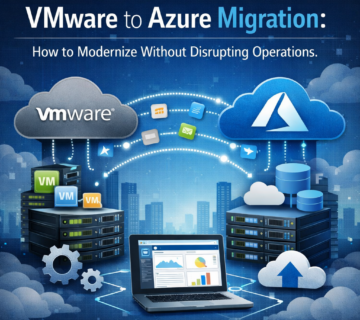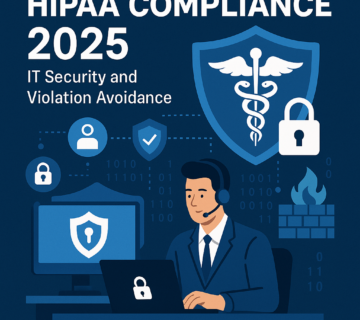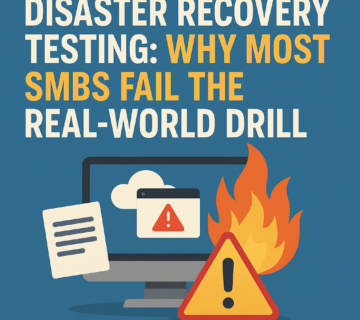AI Data Security Crisis: The Hidden Time Bomb Threatening Every Organization in 2025
🎙️ Dive Deeper with Our Podcast! China’s Massive Data Breach 2025: 4 Billion Records Exposed
👉 Listen to the Episode: https://technijian.com/podcast/the-ai-data-security-emergency-2025/ Subscribe: Youtube | Spotify | Amazon
Executive Summary: The AI Data Security Emergency
Artificial Intelligence has become the double-edged sword of modern business. While AI tools like copilots and agents promise unprecedented productivity gains, they’re simultaneously creating the largest data security crisis in corporate history. According to Varonis’s groundbreaking 2025 State of Data Security Report, 99% of organizations have sensitive data unnecessarily exposed to AI tools – making data breaches not a matter of “if” but “when.”
This comprehensive analysis of 1,000 real-world IT environments reveals a shocking truth: no organization is truly breach-proof in the AI era. The implications are staggering, and the time to act is now.
The AI Data Security Landscape: Understanding the Threat
What Makes AI a Data Security Time Bomb?
AI systems operate like digital vacuum cleaners, constantly scanning, analyzing, and processing vast amounts of organizational data. Unlike traditional software that accesses specific datasets, AI tools have an insatiable appetite for information, often gaining access to sensitive data far beyond their intended scope.
When AI copilots and agents are deployed without proper security measures, they can inadvertently expose:
- Employee salary information
- Research and development data
- Source code and intellectual property
- Customer personal information
- Financial records and business strategies
- Confidential communications
The Dual Nature of AI Risk
The data security threat from AI manifests in two critical ways:
Human-to-Machine Risks: This involves how much sensitive data AI copilots and agents can access or expose through a single prompt. A seemingly innocent query to an AI assistant could potentially surface confidential salary information, proprietary algorithms, or customer data.
Machine-to-Machine Risks: This concerns the integrity of data used to train and feed Large Language Models (LLMs). Corrupted or manipulated training data can have catastrophic consequences, from undermining medical research to embedding malicious code within AI systems.
Shocking Statistics: The Current State of AI Data Security
Varonis’s comprehensive analysis of 1,000 organizations reveals alarming vulnerabilities:
Critical Exposure Metrics
- 99% of organizations have sensitive data unnecessarily exposed to AI tools
- 90% of sensitive cloud data, including AI training datasets, remains open and accessible
- 98% have unverified applications, including shadow AI implementations
- 1 in 7 organizations fail to enforce Multi-Factor Authentication (MFA) across SaaS and multi-cloud environments
- 88% harbor ghost users – inactive accounts that pose significant security risks
The Universal Vulnerability
Perhaps most concerning is that 100% of analyzed organizations were found to be inadequately prepared for AI-related security challenges. This universal vulnerability indicates that AI data security isn’t just an IT problem – it’s an existential business risk.
The Expanding Attack Surface: Beyond AI
While AI represents the most immediate threat, organizations face a perfect storm of security challenges:
Cloud Complexity Multiplication
Modern businesses operate across multiple cloud environments, each with unique security models and potential vulnerabilities. This sprawling infrastructure creates countless entry points for potential attackers.
Shadow IT and Unsanctioned Applications
Employees frequently adopt unauthorized tools and applications, creating security blind spots that IT departments struggle to monitor and control.
Authentication Gaps
The failure to implement comprehensive MFA across all systems leaves organizations vulnerable to credential-based attacks.
Legacy Access Issues
Ghost users – former employees or inactive accounts with persistent access rights – represent a significant and often overlooked security risk.
Industry Impact: Who’s Most at Risk?
Healthcare Organizations
Medical AI systems processing patient data face unique challenges. Manipulated clinical data could undermine life-saving research or compromise patient safety.
Financial Services
Banking and investment firms using AI for trading algorithms and customer service face regulatory compliance issues alongside security risks.
Technology Companies
Software development organizations risk exposure of proprietary source code and intellectual property through AI-assisted coding tools.
Manufacturing and Research
Companies using AI for R&D face the potential exposure of trade secrets and competitive advantages.
The Cost of Inaction: Understanding the Consequences
Direct Financial Impact
- Average data breach costs exceed $4.45 million globally
- Regulatory fines can reach hundreds of millions of dollars
- Legal costs and litigation expenses
- Customer compensation and remediation costs
Indirect Business Consequences
- Permanent loss of competitive advantage
- Damaged brand reputation and customer trust
- Decreased market valuation
- Operational disruption and recovery costs
Regulatory and Compliance Implications
- GDPR violations with fines up to 4% of annual revenue
- HIPAA penalties for healthcare organizations
- SOX compliance issues for public companies
- Industry-specific regulatory consequences
The Three-Pillar Strategy: Securing Your Organization Against AI Data Risks
Pillar 1: Blast Radius Reduction
Minimize Potential Damage Through Proactive Measures
- Implement Zero Trust Architecture: Assume no user or device is inherently trustworthy
- Apply Least Privilege Principles: Grant minimal access rights necessary for job functions
- Regular Access Reviews: Conduct quarterly audits of user permissions and access rights
- Data Classification: Implement comprehensive data labeling and categorization systems
- Microsegmentation: Isolate sensitive data and systems from general network access
Pillar 2: Continuous Monitoring and Governance
Maintain Real-Time Visibility and Control
- Automated Access Governance: Deploy systems that automatically review and adjust permissions
- Behavioral Analytics: Monitor user and system behavior for anomalous activities
- Real-Time Threat Detection: Implement AI-powered security tools for immediate threat identification
- Compliance Monitoring: Ensure ongoing adherence to regulatory requirements
- Incident Response Planning: Develop and regularly test breach response procedures
Pillar 3: AI-Powered Security Solutions
Fight Fire with Fire: Using AI for Defense
- Automated Vulnerability Remediation: Deploy AI systems to identify and fix security gaps
- Predictive Threat Intelligence: Use machine learning to anticipate potential attacks
- Intelligent Access Controls: Implement AI-driven authentication and authorization systems
- Automated Compliance Reporting: Streamline regulatory reporting through AI automation
- Security Orchestration: Coordinate multiple security tools through AI-powered platforms
Implementation Roadmap: From Vulnerability to Security
Phase 1: Assessment and Discovery (Weeks 1-4)
- Comprehensive Data Audit: Identify all data repositories and access points
- AI Tool Inventory: Catalog all AI applications and their data access permissions
- Vulnerability Assessment: Conduct thorough security testing across all systems
- Risk Prioritization: Rank vulnerabilities by potential impact and likelihood
Phase 2: Immediate Risk Mitigation (Weeks 5-12)
- Emergency Access Controls: Implement immediate restrictions on high-risk data access
- MFA Deployment: Roll out multi-factor authentication across all systems
- Ghost User Cleanup: Remove inactive accounts and unnecessary access rights
- Critical Patch Management: Address the most severe vulnerabilities immediately
Phase 3: Comprehensive Security Implementation (Months 4-12)
- Zero Trust Architecture: Deploy comprehensive zero trust security models
- Advanced Monitoring: Implement continuous monitoring and threat detection
- AI Security Tools: Deploy AI-powered security solutions
- Training and Awareness: Educate employees on AI security best practices
Phase 4: Continuous Improvement (Ongoing)
- Regular Security Assessments: Conduct quarterly security evaluations
- Threat Intelligence Updates: Stay current with emerging AI security threats
- Technology Evolution: Continuously upgrade security tools and practices
- Compliance Maintenance: Ensure ongoing regulatory compliance
Best Practices for AI Data Security
Data Governance Excellence
- Classification Standards: Implement clear data classification policies
- Access Controls: Establish role-based access control systems
- Retention Policies: Define clear data retention and deletion procedures
- Audit Trails: Maintain comprehensive logs of all data access and modifications
AI-Specific Security Measures
- Model Validation: Regularly test AI models for bias and accuracy
- Training Data Security: Protect datasets used for AI training
- Prompt Engineering: Implement secure prompt design practices
- Output Monitoring: Monitor AI outputs for sensitive data exposure
Organizational Policies
- AI Usage Guidelines: Establish clear policies for AI tool usage
- Vendor Management: Implement strict security requirements for AI vendors
- Incident Response: Develop AI-specific incident response procedures
- Regular Training: Provide ongoing security awareness training
Future-Proofing Your Organization
Emerging Threats to Monitor
- Advanced Persistent Threats (APTs): Sophisticated attacks targeting AI systems
- AI Poisoning Attacks: Attempts to corrupt AI training data
- Deepfake and Social Engineering: AI-powered social engineering attacks
- Quantum Computing Threats: Future cryptographic vulnerabilities
Technology Evolution Preparation
- Post-Quantum Cryptography: Prepare for quantum-resistant encryption
- Edge AI Security: Secure distributed AI deployments
- Federated Learning: Implement secure collaborative AI training
- Explainable AI: Develop transparent AI decision-making processes
Frequently Asked Questions (FAQ)
Q: How quickly can AI tools expose sensitive data?
A: AI tools can potentially expose sensitive data with a single prompt. Unlike traditional software that requires specific queries, AI systems can surface related information through conversational interfaces, making data exposure extremely rapid and often unintentional.
Q: Are small businesses as vulnerable as large enterprises?
A: Yes, small businesses are equally vulnerable and often more so due to limited security resources. The Varonis report found that organization size didn’t correlate with better security practices – 99% of all organizations, regardless of size, had exposed sensitive data.
Q: What’s the difference between AI data security and traditional cybersecurity?
A: Traditional cybersecurity focuses on protecting defined access points and known threat vectors. AI data security must address the dynamic, learning-based nature of AI systems that can access and correlate data in unpredictable ways, creating new exposure paths.
Q: How much does it cost to implement comprehensive AI data security?
A: Implementation costs vary significantly based on organization size and complexity, typically ranging from $50,000 for small businesses to several million for large enterprises. However, this investment is minimal compared to the average $4.45 million cost of a data breach.
Q: Can we use AI tools safely while maintaining security?
A: Yes, but it requires careful implementation of security controls, proper data governance, and continuous monitoring. The key is implementing AI tools within a comprehensive security framework rather than treating them as isolated applications.
Q: How often should we conduct AI security assessments?
A: Given the rapid evolution of AI technology and threats, quarterly assessments are recommended for most organizations, with continuous monitoring for high-risk environments.
Q: What should we do if we discover our AI tools have already exposed sensitive data?
A: Immediately implement containment measures, conduct a thorough impact assessment, notify relevant stakeholders and regulatory bodies as required, and engage incident response procedures. The key is swift action to minimize ongoing exposure.
Q: Are cloud-based AI services more or less secure than on-premises solutions?
A: Both have advantages and risks. Cloud services often have better security resources but less direct control. On-premises solutions offer more control but require significant security expertise. The key is proper configuration and monitoring regardless of deployment model.
Q: How do we balance AI innovation with security requirements?
A: Implement a “security by design” approach where security considerations are integrated into AI projects from the beginning rather than added afterward. This enables innovation while maintaining security standards.
Q: What role does employee training play in AI data security?
A: Employee training is critical, as human error remains a leading cause of data breaches. Employees need to understand how AI tools work, what data they access, and how to use them securely.
How Technicians Can Help: Your Path to AI Data Security
The complexity of AI data security requires specialized expertise that most organizations don’t possess internally. This is where experienced technicians become invaluable partners in protecting your digital assets.
Comprehensive Security Assessment Services
Our certified security technicians can conduct thorough evaluations of your current AI implementations, identifying vulnerabilities and exposure risks across your entire digital infrastructure. This includes analyzing your AI tools’ data access patterns, permission structures, and potential exposure points.
Custom Security Implementation
Every organization has unique security requirements based on industry, size, and risk tolerance. Our technicians specialize in designing and implementing tailored security solutions that address your specific AI data security challenges while maintaining operational efficiency.
24/7 Monitoring and Incident Response
AI security threats don’t operate on business hours. Our technical teams provide round-the-clock monitoring of your AI systems, with immediate incident response capabilities to contain and mitigate any security breaches or data exposures.
Ongoing Compliance Management
Regulatory requirements for AI and data security continue to evolve. Our technicians stay current with the latest compliance standards and can ensure your organization maintains adherence to all relevant regulations, from GDPR to industry-specific requirements.
Training and Knowledge Transfer
Beyond implementing security measures, our technicians provide comprehensive training for your internal teams, ensuring they understand how to maintain security standards and respond appropriately to emerging threats.
Why Choose Professional Technical Support?
Expertise: Our technicians possess specialized knowledge in AI security that’s difficult to develop internally.
Efficiency: Professional implementation reduces the time to security, getting you protected faster than internal development.
Cost-Effectiveness: Outsourcing specialized security work often costs less than hiring and training internal specialists.
Continuous Updates: We stay current with emerging threats and evolving best practices, ensuring your security measures remain effective.
Proven Track Record: Our experience across multiple industries and security challenges provides proven methodologies for success.
Getting Started
Don’t let your organization become part of the 99% with exposed sensitive data. Contact our technical security specialists today to begin your journey toward comprehensive AI data security. We offer free initial consultations to assess your current risk level and develop a customized protection strategy.
Ready to secure your AI future? Your data can’t afford to wait.
This blog post is based on the Varonis 2025 State of Data Security Report and reflects current best practices in AI data security. For the most up-to-date information and personalized security recommendations, consult with qualified cybersecurity professionals.
About Technijian
Technijian is a premier managed IT services provider, committed to delivering innovative technology solutions that empower businesses across Southern California. Headquartered in Irvine, we offer robust IT support and comprehensive managed IT services tailored to meet the unique needs of organizations of all sizes. Our expertise spans key cities like Aliso Viejo, Anaheim, Brea, Buena Park, Costa Mesa, Cypress, Dana Point, Fountain Valley, Fullerton, Garden Grove, and many more. Our focus is on creating secure, scalable, and streamlined IT environments that drive operational success.
As a trusted IT partner, we prioritize aligning technology with business objectives through personalized IT consulting services. Our extensive expertise covers IT infrastructure management, IT outsourcing, and proactive cybersecurity solutions. From managed IT services in Anaheim to dynamic IT support in Laguna Beach, Mission Viejo, and San Clemente, we work tirelessly to ensure our clients can focus on business growth while we manage their technology needs efficiently.
At Technijian, we provide a suite of flexible IT solutions designed to enhance performance, protect sensitive data, and strengthen cybersecurity. Our services include cloud computing, network management, IT systems management, and disaster recovery planning. We extend our dedicated support across Orange, Rancho Santa Margarita, Santa Ana, and Westminster, ensuring businesses stay adaptable and future-ready in a rapidly evolving digital landscape.
Our proactive approach to IT management also includes help desk support, cybersecurity services, and customized IT consulting for a wide range of industries. We proudly serve businesses in Laguna Hills, Newport Beach, Tustin, Huntington Beach, and Yorba Linda. Our expertise in IT infrastructure services, cloud solutions, and system management makes us the go-to technology partner for businesses seeking reliability and growth.
Partnering with Technijian means gaining a strategic ally dedicated to optimizing your IT infrastructure. Experience the Technijian Advantage with our innovative IT support services, expert IT consulting, and reliable managed IT services in Irvine. We proudly serve clients across Irvine, Orange County, and the wider Southern California region, helping businesses stay secure, efficient, and competitive in today’s digital-first world.





